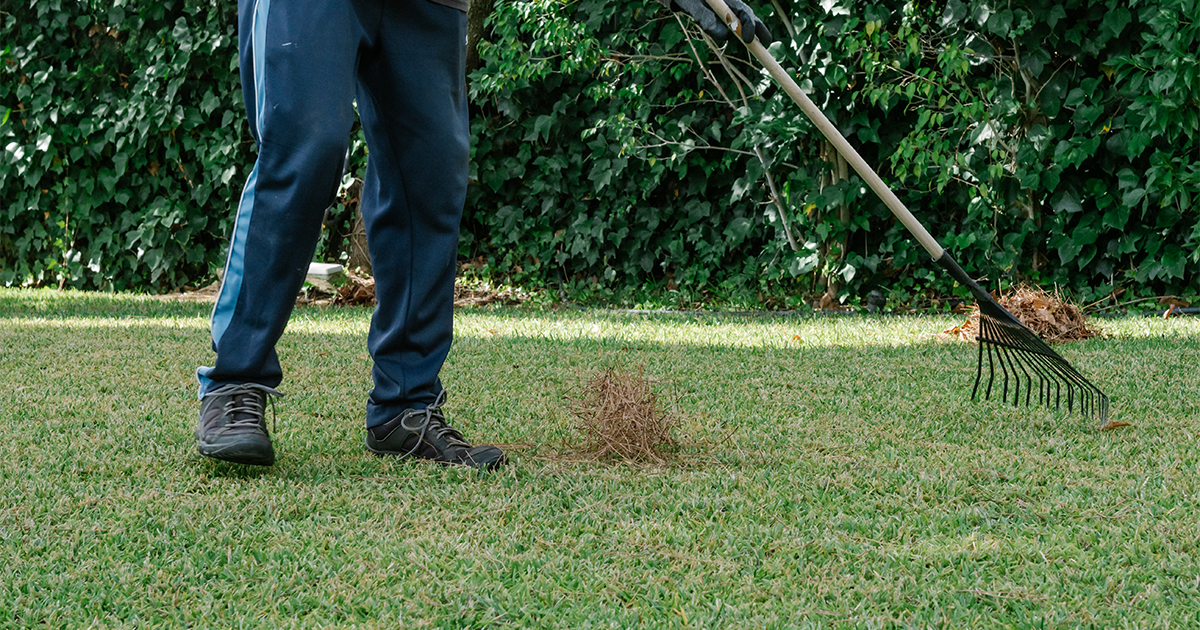Dethatching and Aerating Your Lawn

Looking to boost your lawn's health and charm? Let's talk dethatching and aerating—two must-do tasks for a lawn that's as vibrant as it is lush. These steps are like the secret sauce for soil health, nutrient absorption, and overall lawn perfection. We’ll cover what dethatching and aerating are, why they're important, and how to do them easily and effectively. Let's dive in!
Dethatching Your Lawn
What is lawn thatch?
First things first, what's this thing called thatch? It's that layer of old grass, leaves, and other bits that pile up on your lawn over time. A little bit's cool—it protects your green carpet from the elements. But too much? Not so hot. Thick thatch acts like a barricade, blocking water, food, and air from reaching your grass roots, leading to lackluster growth and a dull lawn.
What is dethatching?
So, what's dethatching? It's like giving your lawn a makeover, removing that excess buildup using a thatching rake or a power rake. The best time to do it is in the fall or early spring when your grass is in the mood for some TLC and can bounce back quickly. Dethatching can make your grass look yellow or brown with stress, but it’ll come back greener than ever in a few weeks.
How do you dethatch a lawn?
Here's the drill: Mow your lawn super short to reveal the thatch layer. Then, grab your thatching rake or power rake and get to work, gently raking back and forth to loosen the thatch and pull it to the top of your turf. Once you're done, tidy up by clearing out all the debris, and voilà—your lawn's breathing easy again!

Aerating Your Lawn
What is aerating?
Now, let's talk aerating—because compacted soil is no friend to lush lawns. Aerating your lawn involves creating small holes in the soil to improve air and water circulation. This process can help to break up compacted soil. When soil becomes compacted it can prevent water, nutrients, and air from reaching the roots of the grass, leading to thin, sad-looking grass patches.
When should you aerate a lawn?
Timing's key. A lawn should be aerated when the soil becomes compacted, usually due to foot traffic, mowing, or a heavy rain. The sweet spot? During the growing season when your grass is actively growing.
For warm-season grasses like Bermuda, that’s going to be late spring or early summer. Cool-season grasses like Kentucky Bluegrass do better in February/early March or the fall.
And remember, don't stress your grass out too much. Aerate only when needed, once every one to three years is a good baseline.
What kind of aerator should I get?
There are two main types: spike aerators and plug aerators. Spike aerators jab little holes in the soil, while plug aerators pull out soil plugs, leaving them on your lawn to decompose. Our vote? Plug aerators for the win—they create bigger holes for better soil breakup.
How do you aerate a lawn?
First, mow your lawn super short to expose the soil. Then, get your aerator of choice and go to town, covering every inch of your lawn. If you went with a plug aerator, leave those soil plugs sitting on the surface—they'll break down and nourish your grass over time.
Conclusion
Dethatching and aerating can take your lawn game to the next level, but they don’t need to be complicated or daunting. The extra air and water circulation will encourage deeper root growth and healthier, more vibrant grass. Your lawn will thank you, and you'll be one step closer to lawn nirvana.

Other Resources:
- "Spring: The best time to Dethatch a Lawn" by The Spruce: https://www.thespruce.com/spring-best-time-dethatch-lawn
-
"When and How Do You Aerate Your Lawn" by The Spruce: https://www.thespruce.com/when-and-how-do-you-aerate-your-grass
-
"Aerating vs. Dethatching - Which is Better for Your Lawn?": https://www.oasisturf.com/blog/aerating-vs-dethatching-which-is-better-for-lawn
- "How to Control Thatch in Your Yard" by the University of Minnesota Extension: https://extension.umn.edu/lawn-care/how-control-thatch-your-lawn






